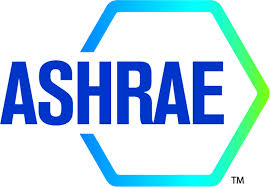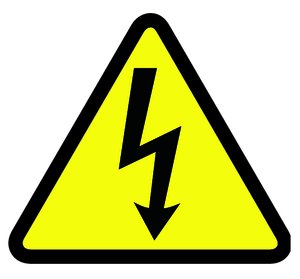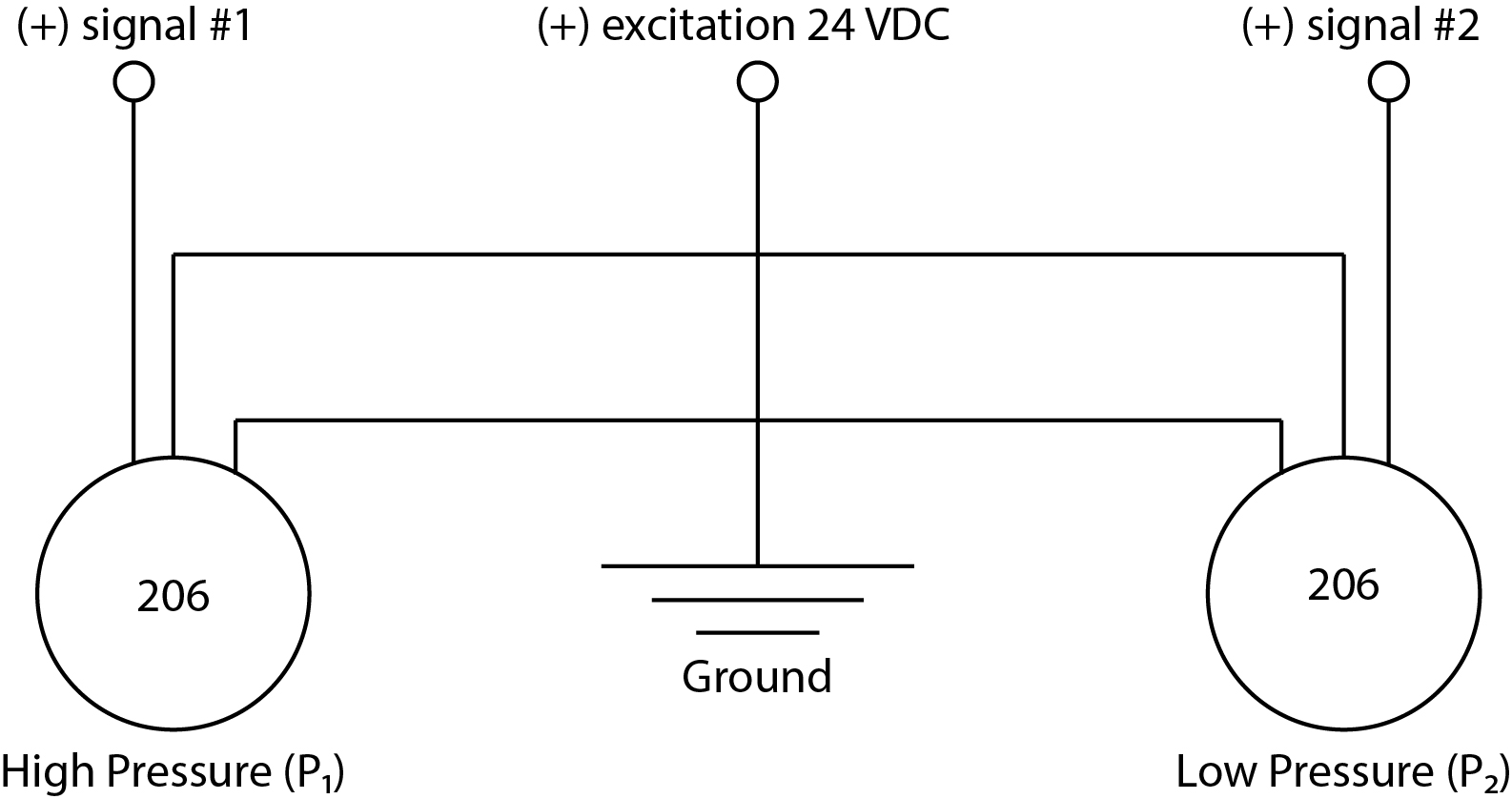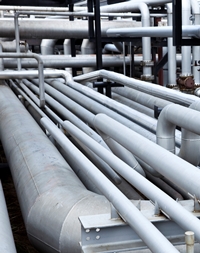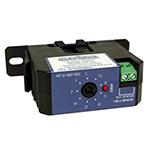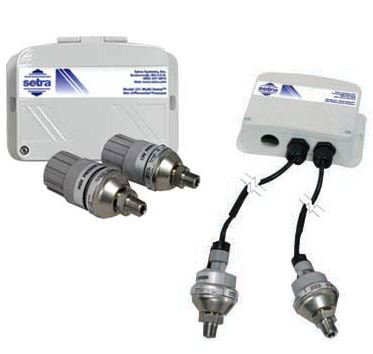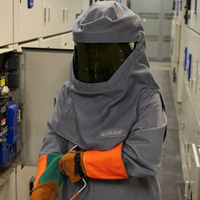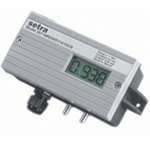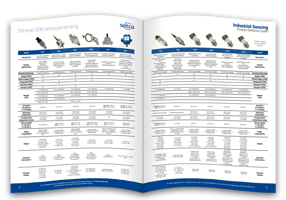There are many risks associated with unmonitored humidity levels in buildings. The most significant of which is the health risks posed to the building’s occupants. Sick Building Syndrome can severely affect occupants’ comfort and productivity, but more alarming are some of the respiratory and other health ailments which can arise from unmonitored humidity levels.
Setra Blog
Shock & vibration are two potential mechanical problems for pressure transducers.
Shock is a sudden, unexpected impact that transmits energy to a device in a relatively short time interval. For a pressure transducer, that energy passes through the stainless steel up through the housing. Shock may originate from rough transportation and handling, such as by trucks, forklifts and conveyors. Alternately, shock can be caused simply by dropping the transducer on the shop floor or by an assembler slamming a cabinet door adjacent to it. A transducer may not be damaged by a single shock, but can experience fatigue failure with numerous low-level shocks over the course of its life.
Excessively high temperatures are a common source of pressure transducer difficulties.
Like most other electronic equipment, pressure transducers are effected by temperature, shock and vibrations. They consist of numerous components that only function within specified temperature ranges. Transducers exposed to temperatures exceeding those ranges during the assembly process can be adversely affected.
For high line pressure, high differential pressure applications
The pressure difference across an orifice plate, filter, pump, valve, etc. can be sensed with two pressure transducers such as the Model 206. One transducer measures the high side pressure (P1) while the other measure the low side pressure (P2). Pressure media can be any liquid or gas compatible with 17-4 pH stainless steel.
Why are industry leaders using remote sensors?
Wet-to-wet differential pressure transducers have undergone several significant design and technological improvements recently. The most dramatic of which is the ability to install these units with remote sensors, rather than with traditional embedded sensing elements. A contractor can now easily install remote sensors directly into the pipes while an electrician makes electrical connections between the remote sensors and the transducer via cables or conduit. For industrial applications, contractors can order plumbing-ready cable versions with up to 30 feet of cable. When the local electrical code requires conduit, typically for projects like schools or municipal buildings, contractors can order units in the conduit version.
There are a variety of current switches and current transducers currently available for use in HVAC applications. Each product provides different features and benefits for that particular job. This post reviews two common types of current switches and a new technology that eliminates the risk of arc flash hazard during installation.
Traditional vs. Remote Sensor Installation
To better understand the labor and material savings made possible by remote sensors, it is important to compare the traditional method of installing differential pressure transmitters with the new method of installing remote sensors. On a typical job using the conventional method, the mechanical contractor first installs taps with shutoff valves—usually a ball or petcock valve—in the desired locations in the mechanical piping.
After reviewing the top 5 product considerations (pressure, media, temperature, and environment) in which the pressure transducer will be installed, it’s time to look at transducer construction, circuit design and the pressure transducer manufacturer's supply chain.
Pre-configuration of current switches can help eliminate arc flash danger and enable faster installation
Current switches, also known as current sensors, are used to monitor the operation of motors, pumps, fans, compressors, lights, and other equipment. Two common types of current switches currently available are fixed point and adjustable set point switches. Fixed current switches are designed with a single pre-determined set point and are beneficial because they are installed on cold circuits requiring no adjustment.
When selecting multi-range pressure sensors, there are certain things to be cautious of. Often a "one size fits all" pressure transducer is chosen for expected cost savings and inventory control; however this decision turns out to be a bad idea. Issues arise with inaccuracy and poor stability on low range applications where the range output adjustment is simply pushed too far.
Subscribe to Our Blog!
Topics
- Critical Environments (182)
- HVAC/R (179)
- General Industrial (153)
- Building Automation (134)
- General Industrial OEM (92)
- Energy Management (85)
- Test and Measurement (66)
- HVAC/R OEM (58)
- Barometric (44)
- Alternative Fuels (42)
- Medical (40)
- Process/Mfg Tank Level (40)
- Water and Wastewater (39)
- OHV (38)
- Oil and Gas (35)
- Industrial Vacuum (29)
- Calibration (25)
- Semiconductor (25)
- Particle Counting (20)
- Cleanroom Monitoring (17)
- Room Pressure Monitoring (16)
- Trade Show (12)
- cleanroom environment (12)
- Scales (11)
- Environmental Monitoring (10)
- Power Monitoring (10)
- Healthcare (9)
- Power Meters (9)
- Software (9)
- cleanroom monitoring systems (9)
- Case Study (8)
- critical environment technologies (8)
- data centers (8)
- Humidity (7)
- particle counter (6)
- pressure transducers (6)
- LITE room pressure monitor (5)
- hardware and software cleanroom monitoring systems (5)
- setra lite (5)
- Compliance (3)
- Video (3)
- hospital spaces (3)
- FAQ & Troubleshooting (2)
- Monitoring Compounding Pharmacies (2)
- Semiconductor Manufacturing (2)
- agencies that monitor pharmacies (2)
- energy (2)
- hvac (2)
- laboratories (2)
- monitor compound pharmacy (2)
- protected environment (2)
- regulatory compliance (2)
- setra lite features (2)
- usp 797 (2)
- Current Sensors and Transducers (1)
- Current Transformers (1)
- Lithium-Ion Battery (1)
- Pressure (1)
- aerospace cleanrooms (1)
- cems (1)
- digital transformation (1)
- ipv6 multicast (1)
- ipv6 multicast address (1)
- ipv6 multicast address range (1)
- isolation room pressure monitoring (1)
- multicast address ipv6 (1)
- multicast ipv6 (1)
- operating room (1)
- pharma 4.0 (1)
- pressure sensor (1)
- pressure transducer companies (1)
- semi conductor (1)
- sensors and transducers (1)
- setra pressure transducers (1)
- submetering (1)
- sustainability (1)
- temperature monitor (1)
- temperature monitoring for pharmacies (1)
- transducers (1)
- usp 800 (1)
- water (1)
- what does hvac stand for (1)
- what is a transducer (1)
- what is hvac (1)

